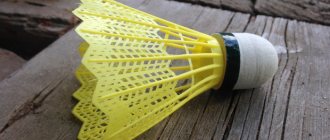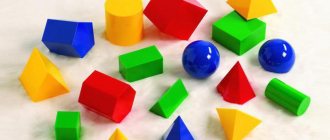Self-analysis of open display of educational activities directly
Edrets Olesya
Self-analysis of open display of educational activities directly
SELF-ANALYSIS
open display of direct educational activities
Edrets Olesya Vladimirovna, teacher of the first qualification category
Summary of direct educational activities (hereinafter referred to as GCD)
developed and conducted in accordance with the main
educational program of preschool education MBDOU "Ilan kindergarten No. 50"
, the program
"From birth to school"
edited by N. E. Veraksa, T. S. Komarova, M. A. Vasilyeva, in the
educational field “Cognition”
(
educational area according to the Federal State Educational Standard for Preschool Education , taking into account the age characteristics of children, in accordance with the federal state educational standards of preschool education .
Theme of the GCD: “Travel to the planet “Igralia”
»
Type of educational activity: The educational activity itself is integrated, since through various contents and types of activities the main goal of the educational activity .
Form of organization of children: with a subgroup of children of 10 people, form of organization: NOD - travel.
Educational area : Cognitive development.
Integration of educational areas : social and communicative development, cognitive development, speech development, physical development.
Duration 30 minutes, which complies with SanPin standards
The purpose of the educational activity itself is to consolidate children’s acquired knowledge on the formation of elementary mathematical concepts through the use of games by V.V. Voskobovich.
Tasks:
Educational:
- strengthen children’s ability to navigate on a sheet of paper, place objects and their images in the indicated direction, reflect their spatial location in speech (top, bottom, left, right, top left (bottom right)
corner);
- practice counting within 10 in reverse order ;
— improve ordinal counting skills within 10;
— improve the ability to construct figures according to given coordinates, the ability to compose numbers using a verbal model;
- consolidate geometric shapes, knowledge of numbers;
— continue to teach how to solve arithmetic problems.
Educational:
- develop attention, spatial and logical thinking, fine motor skills of the hands
- develop the desire to discuss what you see, talk about experiences and impressions.
- expand children's vocabulary.
- develop ingenuity , the ability independently solve a given problem.
Educational:
- develop the ability to interact with peers.
- cultivate interest in educational games.
- cultivate a caring attitude towards health.
- cultivate interest in mathematical studies.
Types of children's activities : Children's activities Forms and methods of organizing joint activities
Motor Fizminutka “Space”
Game Game: educational games by V. V. Voskobovich “Geokont”
,
"The Magic Eight"
.
Productive: working on a sheet of paper.
Cognitive and research constructive activity “Rocket”
on
Geokont
.
Communicative Guessing riddles, questions, game.
Reading fiction: riddles.
Materials and equipment: sheets of paper according to the number of children, simple pencils; educational games by V. Voskobovich: “Geocont”
,
“The Magic Eight”
,
“The Entertainer Cord”
; sheets with diagrams and coordinates; amulets, helium balloon; projector, laptop.
Compliance with sanitary and hygienic requirements. Prepared the premises in accordance with sanitary and hygienic requirements, thought over the location of demonstration and visual material for the GCD.
GCD structure:
itself was structured in the form of a travel game; I tried to use various forms of organizing the children. This is an individual work - work on sheets of paper, with the “Magic Eight”
, during which I could see the level of mastery of the material by each child, and the ability to work in pairs (constructing a rocket on
Geokont
, to be able to notice the mistakes of others.
She actively used techniques to ensure emotionality: musical accompaniment, a cosmic voice, a meeting with a resident of the planet Igralia.
into educational activities - a trip to the planet Igralia. Training was structured as an exciting, playful activity .
Completing various game tasks created a positive, emotional background for the learning process, increased children’s speech activity and maintained interest throughout the entire educational activity .
I used the following methods in my work:
Verbal: questions, instructions, individual answers from children, analysis of the lesson.
Practical: children’s independent activities (construction, physical exercises.
The method of control and stimulation is in the form of approval and praise.
Gaming: educational games by V.V. Voskobovich, the use of a surprise moment.
The methods used correspond to the material being studied and the ways of organizing activities in accordance with the level of the group.
The proposed tasks were given to children in a playful way, which contributed to the solution of the assigned development tasks: memory, speech, imagination , attention.
Throughout the entire activity, the children were responsive , friendly and completed all tasks with great pleasure.
The type of educational activity is integrated , which contributes to the solution of assigned tasks in a complex. All stages were interconnected, subordinated to a given topic and goals of educational activity . Changing the type of activity at each stage made it possible to prevent fatigue and satiety with any one type of activity . Pay attention to the posture of children while working at tables,
Conclusion: Analyzing the children’s activities , I would like to note that they showed cognitive activity, reacted emotionally, and used existing knowledge and skills. They were interested, attentive, organized. Analyzing the educational activities , we can say that the assigned tasks were successfully completed. I believe that the activity is structured logically , and the stages are interconnected.
I think that the game motivation aroused the interest of the children and the activity was quite high. However, several children worked at their own pace and completed the creative task a little later, not because of slowness, but because of their individual capabilities. Although this does not indicate that they have less skills and knowledge.
The children pleased me that the kindness of the child’s soul, their curiosity was felt throughout the entire educational activity .
Bibliography:
1. https://razumniki.ru/zagadki_pro_kosmos.html.
2. https://nsportal.ru/shkola/informatika-i-ikt/library/fizminutka.
3. wiki.iteach.ru/images/c/c1/Exmlzzzzample.doc.
4. Children's encyclopedia "Cosmos"
. Moscow ROSMEN 2012
Self-analysis GCD methodological development (senior group) on the topic
GCD Self-Analysis
Compiled by the teacher
Zelenetskaya S.V.
Joint activities with children were carried out in a group of senior preschool age. There are 27 children in my group. The form chosen was subgroup, 8 people. When developing this GCD summary, I first of all took into account the age and mental characteristics of the children of the older (my) group.
GCD on cognitive and research activities topic
"Help Cinderella."
ECD combines educational areas: “Cognitive development”, “Speech development”, “Social and communicative development”, “Physical”. This activity was preceded by a series of experiments (experiments) with different types of materials.
ECD was carried out in accordance with the objectives of the main general education program “From birth to school”, according to which our kindergarten operates.
To implement each task, techniques were selected to help solve software problems in an interesting and entertaining way.
In direct educational activities, she created conditions for the formation of prerequisites for universal educational activities:
- Personal UUD - (during the organizational moment, a respectful attitude towards others was cultivated).
- Regulatory UUD - During the NOD, she constantly tried to raise problematic issues, thereby trying to create conditions for the formation of prerequisites for regulatory UUD.
- Cognitive UUD - the prerequisites for the skills of analysis and synthesis were carried out during the updating of children’s knowledge based on reliance on life experience and children’s knowledge. When describing subjects, a prerequisite for understanding the conscious construction of a speech utterance was formed. During the summing up of educational activities, the prerequisite for the ability to evaluate one’s own activities was formed.
- Communicative UUD - compliance with the rules of communication, carried out in joint activities, construction of small monologue statements, proactive cooperation in searching for the necessary information.
The following technologies were used in the GCD process:
-game activity;
-activity approach;
-learning in dialogue with adults;
-technology of developmental education;
- health-saving technologies.
The children were united by the content of the activity and demonstrated their knowledge at their age level. All this was built taking into account the age and psychological characteristics of children.
The introductory part of the direct educational activity (DEA) involved organizing the children: switching attention to the upcoming activity, stimulating interest in it, creating an emotional mood, setting up for the upcoming activity, and explaining. GCD was aimed at solving a problem-game situation.
The main part of ECD is the independent mental and practical activity of children, aimed at independent mental and practical work, and the implementation of all assigned educational tasks.
The main part of the ECD included tasks for repeating what has been learned and activating basic knowledge in order to repeat what has been learned and lead to the perception of new knowledge, systematizing children’s existing knowledge in independent activities, and consolidating skills.
To mobilize the intellectual capabilities of children and relieve their general fatigue, musical games were held. In addition, changing different types of activities also helped relieve the children’s fatigue.
Direct educational activities were built using elements of modern educational technologies. Individualization of learning was manifested in providing assistance, reminders, additional explanations to children who had difficulty completing tasks, as well as taking into account the peculiarities of thinking and the pace of perception of each child.
To achieve results for each child during the activity, a differentiated approach to learning was provided, expressed in the use of tasks of different levels of complexity, taking into account the level of knowledge and the “zone of proximal development” of each child.
To solve the problems assigned to the children, I used didactic aids, a living object (examination items) to develop logical thinking, memory, attention, and auditory perception.
In the final part, the NOD summed up the activity, using the method of analyzing the success of completing the task and the method of children’s self-assessment of their capabilities.
I believe that the form of organizing the direct educational activities of children that I chose was quite effective. Throughout the entire educational activity, the prerequisites for UUD (universal educational activities) were formed, which will further serve as the basis for the formation of UUD (universal educational activities) in accordance with the requirements of the Federal State Educational Standard of Preschool Education. I tried to comply with the norms of pedagogical ethics and tact.
Conclusion:
GCD corresponds to the assigned tasks. I consider GCD effective because the development of children's speech activity was ensured. Various types of children's activities and forms of their organization and methodological techniques were used.
In addition to all the listed methods, throughout all 3 stages, I tried to use the method of stimulation and motivation: emotional methods, the method of verbal encouragement. I believe that all these methods and techniques used during the lesson contributed to the emotional response of children, the development of interactive speech and communicative relationships, attention and thinking, memory and imagination.
I think that I coped with the tasks that were set, and so did the children. GCD achieved its goal.



